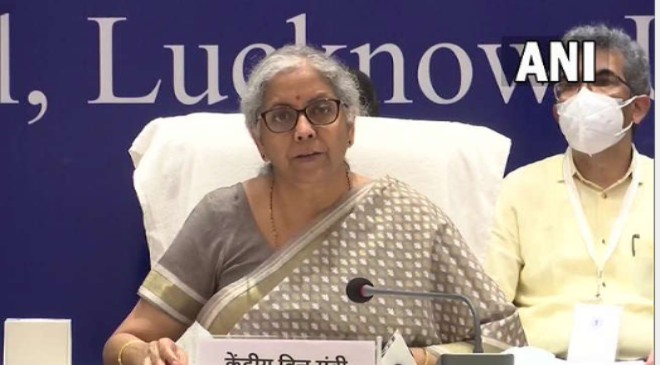Aday before Union Finance Minister Nirmala Sitharaman begins the customary pre-budget meetings with stakeholders, the Confederation of Indian Industry (CII) has proposed a reduction in personal income tax rates to revive demand.
Also Read – Taken multiple insurance policies? You can no longer hide it from other insurers!
This could benefit nearly 5.83 crore individuals who are part of the income tax regime as they have filed ITRs for the assessment year 2022-23.
While this proposal may increase the amount of money in the hands of those who pay direct taxes on income, the other key proposal by industry body CII, if accepted, could lead to a reduction in prices of commodities which attract high GST rates.
CII has suggested that the Union government should consider reducing the 28 per cent GST rate on select consumer durables.
DECRIMINALISATION OF GST
Interestingly, in another proposal, the industry body wants the government to decriminalise the GST. It argued that there are adequate penal provisions for deterrence against evasion of taxes already inbuilt in the GST law.
The recommendation further said that the applicability of prosecution provisions should not be based on the total amount of tax evasion but “on real intent to evade the taxes along with a certain percentage of the tax payable”.
MEASURES TOUGH TO EXECUTE?
However, experts say that the CII’s proposal on income tax would be tough to execute for the finance minister given the revenue situation. In September, the department of revenue in a release said that Direct Tax net collections for the FY 2022-23 (as of 17/9/2022) stood at Rs 7,00,669 crore, compared to Rs 5,68,147 crore in the corresponding period of the FY 2021-22. This represented an increase of 23%.
The Net Direct Tax collection of Rs 7,00,669 crore(net of refund) included Corporation Tax (CIT) at Rs 3,68,484 crore and Personal Income Tax (PIT) including Securities Transaction Tax (STT) at Rs 3,30,490 crore.
Similarly, on the proposal for reduction in the highest slab of GST, a call has to be taken by the GST council. In July, Revenue Secretary Tarun Bajaj stated that the government is for reducing the number of tax slabs in the GST regime.
“The government would want to continue with the top GST slab of 28 per cent for luxury and sin goods while looking to narrow down rates between 5-18 per cent slabs to two to begin with before making GST a single mean rate tax system,” he said.
In October, GST collection stood at Rs 1,51,718 crore. This was the second highest since July 2017 when the GST regime kicked in. In April, the highest ever GST collection of Rs 1,67,540 crore was recorded.
SUBSIDIES ON FUEL AND FERTILIZERS
For expenditure rationalisation, CII has emphasised the need to curtail non-priority expenditure by rationalising subsidies, such as fuel and fertilizers. The body argued that non-merit subsidies are economically unsustainable as they comprise a staggering 5.7% of GDP, of which 1.6% is from the Centre and 4.1% from states.
TO REVIVE INVESTMENT
For reviving investment, the industry body has recommended that the government should raise capital spending from the current 2.9% of the country’s gross domestic product (GDP) to 3.3-3.4% in next financial year 2023-2024. It has also proposed an escalation in capital spending by the government to 3.8-3.9% by FY25.
The CII proposed that to meet its divestment targets, the government should speed up the PSU privatisation process in the next fiscal.
Apart from these, the industry body has submitted its recommendations on a slew of issues that include green and rural infrastructure projects.
Also Read – FM Nirmala Sitharaman To Begin Pre-Budget Consultations From Today
CII’S BUDGET RECOMMENDATIONS
- Cut rates of personal income tax to revive demand
- Cut 28 per cent GST rate on select consumer durables
- Decriminalise GST law
- Boost employment generation by hike in rural infrastructure projects
- Hike capital spending to 3.3-3.4 percent of GDP in FY24 from 2.9 percent currently
- Higher outlays for green infrastructure such as renewables plus traditional infrastructure like roads, railways, and ports
- Defined roadmap to bring down the fiscal deficit to 6.0 percent of GDP in FY24
- Bring pace to PSU privatisation
- Subsidy rationalising for fuel and fertilizers to cut non-priority expenditure





































